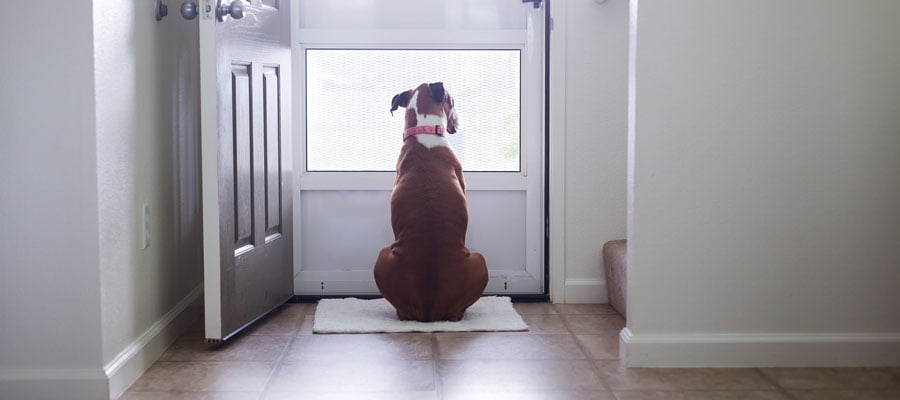It’s been a good 6 to 8 weeks of social distancing and being ordered to stay at home as much as possible. You know who’s not complaining about that so far, your dog, cat, or other family pet. They’re getting extra love, walks, and probably an increase of treats throughout the day. Talk about a perfect life.
But now that Governor Little released his 4-step plan to reopen Idaho’s businesses and public areas, our pet’s lives are going to be altered once again. What will this mean for your dog or cat?
Going through an abrupt schedule change doesn’t have to be as scary for you or your dog and cat as it may sound. Remember that many family pets experience this kind of shift when kids are home for the summer and are spending more time at home. At the end of August or beginning of September, the shift happens all over again.
Here are some tips for helping your new family member make a smooth transition from having you full-time, to only having you during the evenings and weekends.
- Start Time Away Now: Whether you’re going back to work on the 1st, 16th, or later, start letting your pet or pets stay at home longer and longer. Maybe take a little longer at the grocery store than usual (while still being safe, of course.) Or take the longer route home from running necessary errands. This will start letting your pet get used to you coming and going without causing a huge disruption in their routine.
- Enrichment Toys: Food reward puzzles, slow feeders, Kong balls, and other interactive toys are a great way for your dog or cat to keep themselves busy.
- Morning Walks or Runs: Create a schedule with your family that gets everyone involved. Each morning someone should get up a little bit earlier than normal to take the dog out for a walk or a game of catch the frisbee. Not only will this let your dog know you still care, but getting out that extra energy means she is less likely to be destructive while you are gone.
- Time to Leave: When it is finally time to leave, don’t make a big deal of it. Pet your dog, but don’t get emotional — your dog can sense your emotions, and if you are upset, he will be more likely to be upset. Distract him with a new toy (or an old one he hasn’t seen in a while) or a treat-stuffed toy. For anxious dogs, leaving a radio or TV on can help.
- Lunch or Afternoon break: If you can, schedule someone in your family to go home around midday to let your dog out for some quick exercise. Not only does it break up the length of time she is left alone, but it also relieves some energy. If no one in the family can do it, consider asking a neighbor or hiring a dog walker. Taking her to a doggy daycare a couple of times a week is another great option.
- Back Home: When you return home for the day, again, don’t make a big deal of it. If you act like you have been gone forever, especially if your dog has anxiety, he will think you have been gone forever. The best thing to do is ignore him when you first get home, then after a few minutes, calmly greet your dog or cat.
- Exercising in the Evening: It’s easy to forget the dog, even when you are home. You have had a long day, cook dinner, help the kids with their schoolwork, and now all you want to do is sit on the couch. But your dog has been waiting for you all day and most likely has unspent energy. After her dinner, be sure to take her out for some exercise and playtime.
- Doggy Day Care: If your dog is going to be spending more than 6 hours alone, doggy daycare is an excellent alternative, especially if you have a high energy dog. During day camp, the dogs have multiple play sessions as a group. This promotes more exercise and socialization opportunities with other dogs. They also get restful breaks with puzzles and Kong toys to promote problem-solving. There is no need to feel guilt with you have to work through lunch or get a quick drink with a co-worker after work.
If your dog or cat has never experienced an extended amount of time alone in your home, it’s going to take some time for them to get used to it. If your dog has gone through this routine in past years, he may remember and settle in more quickly. A simple routine can help alleviate any stress your dog feels. Even if your dog does not suffer from depression or anxiety per se, he will still appreciate this simple transition, which will ensure he gets enough attention and exercise.
